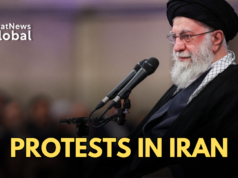NEW DELHI: When President-elect Joe Biden formally takes charge a little over a month from now, he is expected to be briefed on a report prepared by a working group comprising 28 China specialists and technology experts from academia, industry and think tanks. The report sponsored by the University of California at San Diego’s 21st Century China Centre took around one year to prepare and covers four areas where the challenge from China is deemed serious. These are Science & Tech, Fundamental Research, 5G Digital Communications, Artificial Intelligence & Biotechnology.
For the purpose of this piece, StratNews Global focused on the report’s recommendations on 5G. Defining it as a “fundamental, evolving infrastructure technology”, it underscores that the US is “strongly competitive in the underlying technological drivers of 5G as it evolves. A smart US strategy to enhance US security and competitiveness will shape the evolution of 5G in ways that fit these strengths.”
From an Indian point of view, it makes a very interesting point about Huawei, China’s world leader in 5G. The report articulates the stand that “the US should not attempt to win a race between Huawei and a new American national champion. Instead, the US should adopt a forward looking strategy to enable a variety of new entrants into the 5G innovation space. This strategy would erode dependence on a single equipment provider for the entire 5G network by facilitating the emergence of open and modular architectures such as ORAN or vRAN.”
It then makes the important point: “Diversifying suppliers will also make it easier to manage both immediate security risks and complex future threats to the 5G ecosystem as it shifts from single vendor model to a more competitive and diverse inter-operative system.”
The report admits that Huawei presents a “special challenge”. The risks it presents justifies the ban placed on it by several countries but it notes that “total global exclusion of Huawei is not feasible nor is Huawei the only risk. Instead, the US should pursue a layered approach to risk mitigation that maximizes network security and reliability and manages the espionage and sabotage risks in the applications and end-user devices that interact deeply with these networks.”
It then goes on to 5G standards and makes the following points:
- The US should deflect Beijing’s attempt to dominate the standards process through government coordination of Chinese firms;
- The US should play a role in the inter-governmental process;
- It should enable more US firms to fully participate in the voluntary, transparent, industry-led and intellectual property-protecting consensus for setting standards.
- This would involve giving incentives to US firms that would encourage them to take part in the standardization process;
- The US should also work with allies to counter market-distorting subsidies by the Chinese government to its telecom companies.





